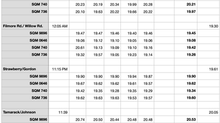Getting To Know This Big Thing
- Chuck Bueter
- Dec 1, 2016
- 2 min read
"Here's this big thing and we can get energy from it."
That was one takeaway message from Dr. Micha Kilburn, an outreach specialist for the Joint Institute of Nuclear Astrophysics (JINA-CEE). She had summed up the ridiculously obvious that we're too embarrassed to admit. Regardless of the political stripes that encumber you, consider that notion--vast energy source.

If we want to nurture a culture that strives to thrive on renewable energy, we need to be more familiar with and informed about the sun.
On Monday, August 21, every man, woman, and child in the USA should experience the moon blocking out a significant portion of the sun. Observers along a narrow swath that bisects the country from Oregon to South Carolina can witness a total solar eclipse--the spectacle of a lifetime.
If an objective is for everyone to track the sun, getting people to observe the 2017 solar eclipse meets an assessment metric.
As noted at a recent workshop, a priority is for everyone to observe totality near the centerline. In reality, most people will access the phenomenon from outside the swath. And all people must have access. At the least, know to make or seek projected images of the crescent sun, whether projected through leaves or crossed fingers or a colander or a pinhole. Without protective eyewear, don't look up, look out.
Another way to track the sun is to make a solargraph, a pinhole camera that captures an image of the sun and the foreground over a months-long duration. Patiently image the solar output and act on the solargraph outcome.
Back to the notion of "here's this big thing and we can get energy from it." The sun is freely pumping out vast amounts of energy. Tap into it. Facilitate a sea change. Remember Henry Ford's delivering more than a faster horse.








































